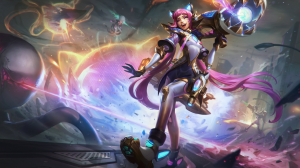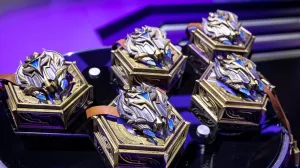As a potential esport, Fortnite has a lot to prove, and its day of reckoning is near. The Fortnite Pro Am 2018 is only a week away, and it marks the popular game’s largest foray thus far into mainstream competitive play. A worldwide audience will be watching on June 12 as 100 celebrities, from professional gamers and streamers to some of the biggest names in sports and entertainment, take the stage to compete for a $3 million prize pool for charity. This is on top of the $100 million recently offered by Epic Games, which will be used for prizes in the first year of Fortnite competitions. It’s certainly ambitious, and Epic is determined to put their money where their mouth is. However, there are deeper underlying problems with the game that threaten to undermine its success.
One of Epic Games’ greatest strengths as a developer, at least in relation to Fortnite, is their willingness to change. Their title is constantly adapting, largely in part due to player feedback. Nearly every time players log in, they can expect to see some sort of change. These include new cosmetic items, limited time game modes, or larger, brand-new additions to the game. Of course, updates are necessary for an Early Access title in order for it to reach its best, most complete version. However, this development cycle is less beneficial for a competitive esport. Fortnite is in the crossroads of these two paths. Here we are discussing the title’s potential as an esport, complete with millions of dollars worth of prizes, and it’s not even a finished game yet.
The current state of the game…
Let’s take a look at the past couple weeks. Alongside routine tweaks and balance patches, a number of new items have greatly increased the speed of play. First came the jetpack, a limited-time item that grants players an unforeseen level of verticality. On one hand, the jetpack opens new avenues of gameplay, allowing previously impossible tactics to shine. On the other, it removes the emphasis on building–you know, that one key gameplay element that separates Fortnite from its competition.
Next came shopping carts, the game’s first vehicles. These items are more team-oriented, and allow two players to ride into combat or escape the storm together. While the carts do provide a great boost to speed, they also make you a loud, prominent target for enemies. This balance keeps them in check with the rest of the gameplay loop.
Lastly, today marks the return of bounce pads. Originally a feature from Season 1, these were replaced shortly thereafter by the current launch pads. It’s unclear whether or not this latest implementation will stick, but the fact remains that this is the third item in a series of updates that make the game faster. More importantly, it’s another update that removes emphasis on building.

…aaand it’s changed
All of this is on top of yet another recent datamine which hints at two more items en route, stink grenades and drop traps. Though the exact function of stink grenades is unclear, they resemble an older item, long-since removed: smoke grenades. Epic has experimented with grenade varieties before, and they failed to impact the game’s ecosystem. On the other hand, drop traps, though pulled from the cooperative Save the World mode, have already indirectly affected core strategies in Battle Royale. Recently, the damage of wall traps dropped from 125 to 75. This controversial decision severely impacted the item’s usefulness. If drop traps are added, it supports the idea that wall traps were nerfed in order to make room for the new item. This rapid implementation of ideas means strategies need constant revision.
And that’s only the beginning. Beyond changes to the tools at players’ disposal, the terrain of the playing field sees routine updates as well. This is especially true during the current cycle of Season 4. At the beginning of the season, players saw a brief cinematic informing them that their beloved island battleground was ravaged by a meteor. Numerous locations were torn apart, with mysterious, glowing hop rocks peppering the landscape. In the weeks that followed, the underlying narrative progressed. Locations are being rebuilt, with construction trucks collecting hop rocks, craters filled, and fresh vegetation sprouting. The very foundation of the playing field is shifting before our eyes, with former favorite landing spots becoming completely rearranged.
This is fine for regular play, but it complicates matters when tournaments are involved.
Implications for Fortnite as an esport
Not only do these constant, game-shifting updates encourage constant, daily play, but they demand it. In part, this results in a greater skill ceiling and larger gap between levels of play. It’s what helps make streamers so interesting for casual players to watch, and what brings energy to large events. At its best, this system highlights one of the most unique aspects of esports as a whole, in that the rules of the game are always changing. Compare this to a traditional sport such as basketball, where the rule set may not see much change for years at a time. In Fortnite, players are not only responsible for maintaining their skills and strategies, but also for adapting to the forced obsolescence of certain techniques. Three-point shots still exist, despite NBA player Stephen Curry sinking them with ease. The same isn’t true for the “double-pump” meta in Fortnite.
Unfortunately, constant mid-season updates also perpetuate the dark side of game-streaming culture. Top players such as Tyler “Ninja” Blevins routinely report playing for 12 hours a day. Stress continues to build when exhaustion or other factors result in sub-par play. It’s true that Ninja’s streams are based on entertainment, rather than purely winning matches. He and other popular streamers focus on flashy plays over tactical victories. That being said, rigorous play sessions on a daily basis are necessary, both for maintaining their audiences and for keeping current with new playstyles.
The bigger they are, the harder they fall
This problem may come to an explosive conclusion at the Pro Am 2018. For anyone paying attention, Epic Games typically releases updates on Tuesday. It’s far too significant to be mere coincidence that their flagship public tournament will be on a Tuesday. For entertainment purposes, it would make great sense for Epic to unveil a large-scale shift. This would surprise players and audiences alike during the high-profile event. However, for the sake of competition, this could drastically color the future of the game. It’s easy to feel cheated when elements of chance are involved. Unfortunately, this is something that is inherent with the RNG elements of Fortnite‘s core gameplay. Further meddling with the formula may result in a more popular game for Epic, but a worse, less credible esport.
Fortnite is a game that is in danger of outgrowing itself. At its best, these rapid updates result in unique opportunities for skilled players to build upon their existing knowledge of the game. Unfortunately, it seems that with almost every other update, Epic is just throwing ideas at a wall, seeing what will stick. The game is in the midst of an identity crisis. The future of Fortnite is unclear because its own developers aren’t sure where to go. Let’s not forget the game’s humble origins as a story-based cooperative title. It’s clear Epic Games want to reach new heights but, so far, they’re building in circles to get there.







